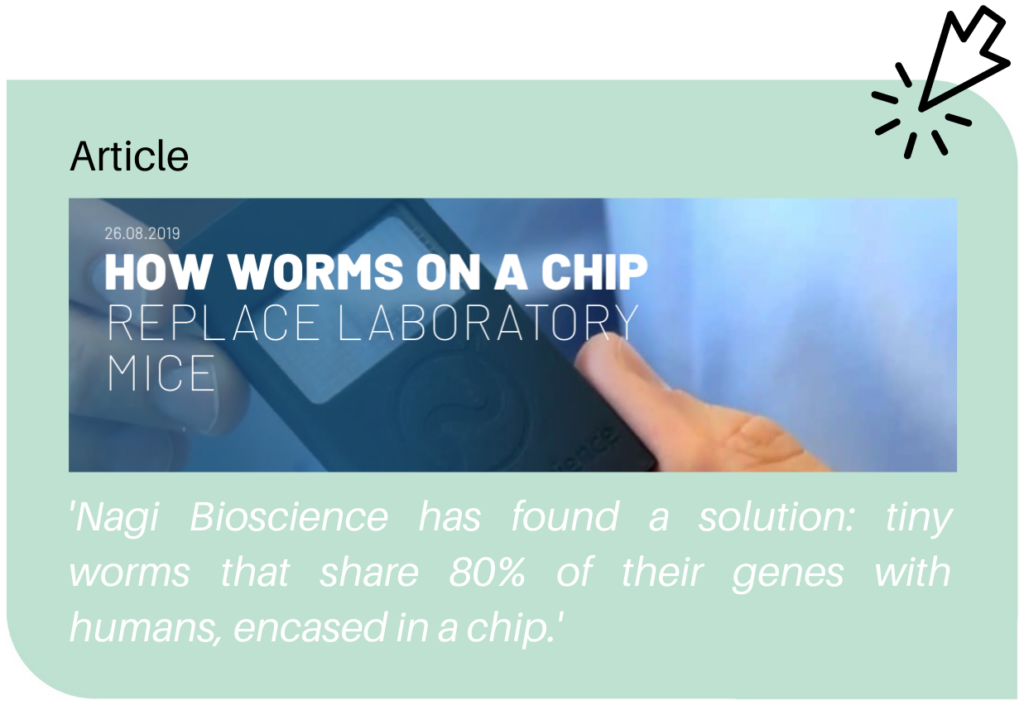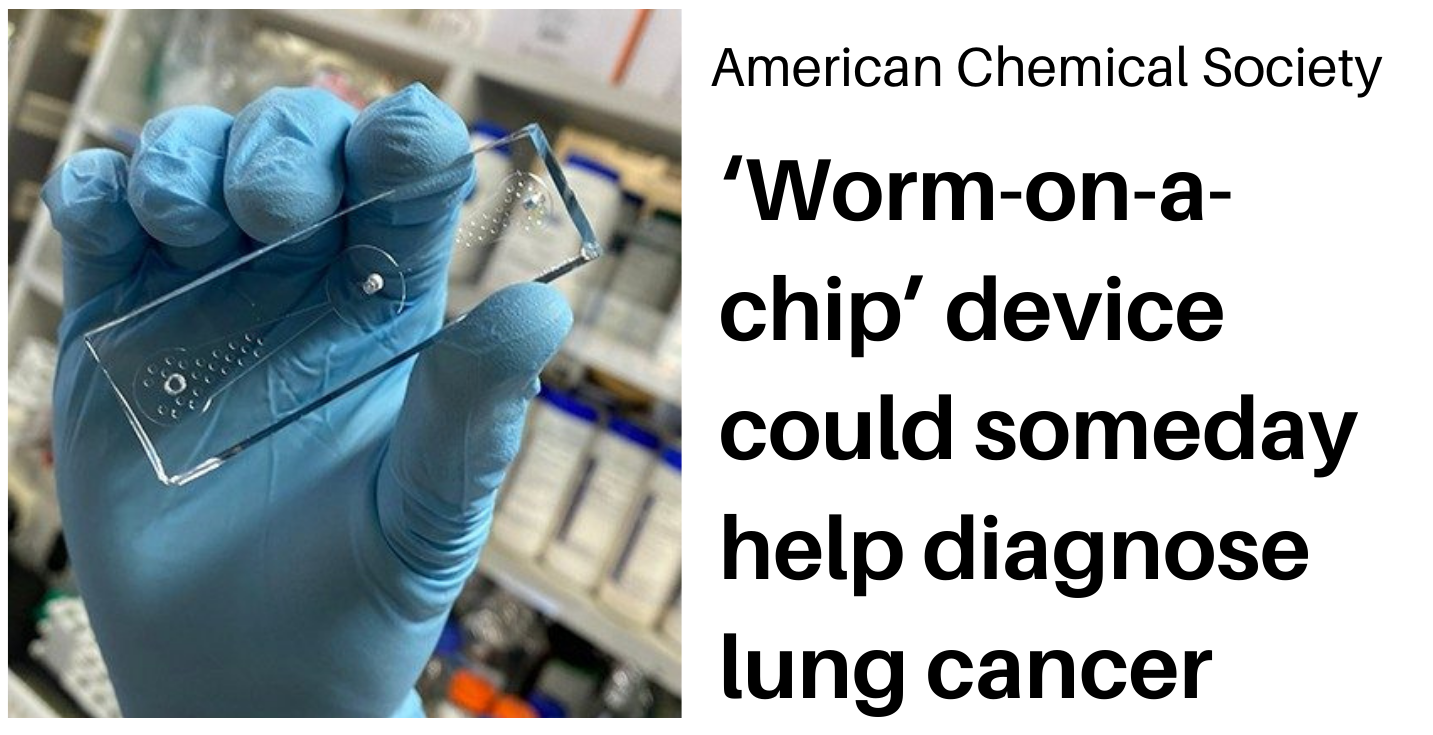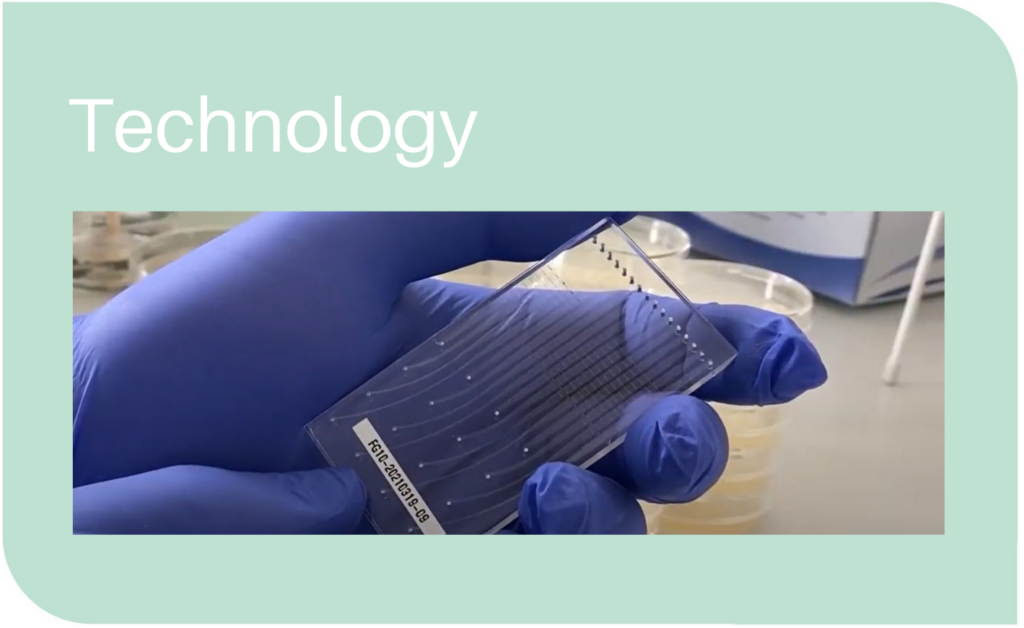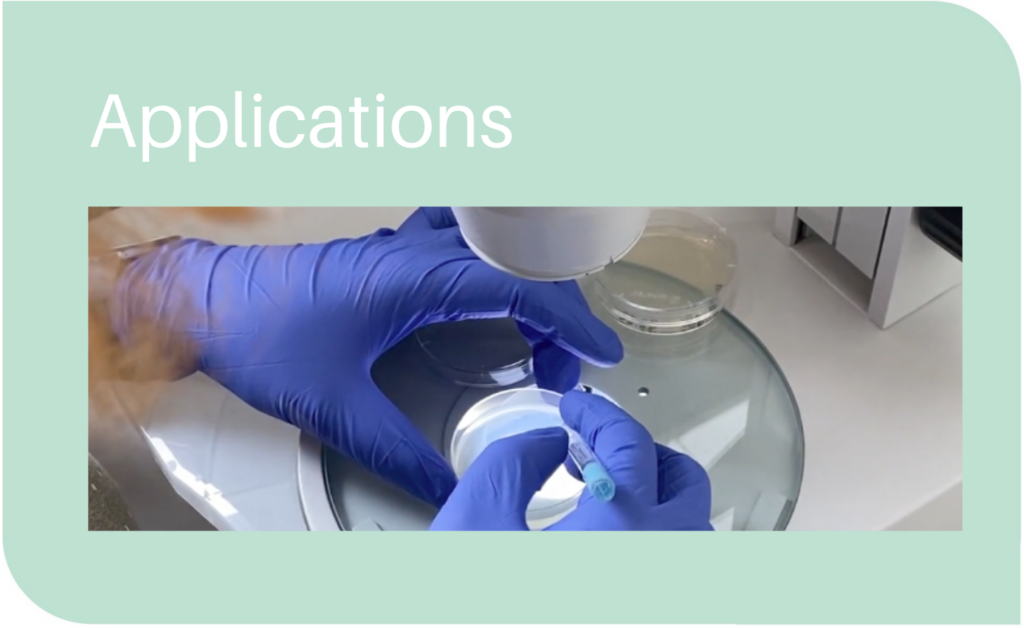
From drug discovery to a possible future tool for lung cancer detection. How the Worm-on-chip is revolutionizing the alternative testing methods sector
Last week we reviewed the potential of the nematode C. elegans as a biological model for cancer research, but did you know that new studies indicate that our favorite tiny worms can be used not only in drug development, but also for diagnostics?
The new Lab-on-a-Chip player: The Worm-on-Chip
A Lab-on-a-Chip is a small device integrating one or more lab analyses in a single chip, which allows a substantial reduction in costs and speeds up R&D processes. Other advantages include parallelization, ergonomics, higher diagnostic rapidity and sensitivity. This technology relies either on microfluidics or on molecular biology, and can be used for several applications like DNA analysis, diagnostics, or synthesis of chemicals.
Microfluidics and the origin of Labs-on-a-Chip are intrinsically intertwined. Coming from the necessity of miniaturized components for the Apollo program, microtechnologies and microfabrication were born. And like that, thanks to the development of these technologies, the very first Lab-on-a-Chip was built in 1979 at Stanford University. In the 1990s, researchers started using microfluidics in an attempt to perform biochemical operations in Labs-on-a-Chip.
While the primary focus of those Labs-on-a-Chip was cell biology (since the microchannels and the cells were of the same size), today we assist to a new advanced paradigm: the Worm-on-Chip. Thanks to the small size of the nematode C. elegans, they can easily fit into a microfluidic chip to perform several types of bioassays, from reproductive toxicity to neurodegenerative assays.

The Worm-on-Chip and its applications
Nagi Bioscience proudly introduces the first Organism-on-Chip technology allowing in vivo testing at the in vitro scale, and bridging the gap between cell-based and vertebrate animal models. By using the Nagi’s Chips in our SydLab System, we completely replaced the traditional manual protocols used in C. elegans research. The SydLab System allows, for the first time, the fully automated high content screening of drugs and chemicals on C. elegans.
But what is the future? While the pioneer Nagi’s platform supports multiple bioassays for toxicity and safety assessment of substances, we are convinced that the applications of such technology, along with the robust biological model C. elegans, have a much wider potential in the biotech sector.
Can worms detect lung cancer?
A great example of the advancement of such technology is the recently published study assessing how C. elegans and, more concretely, the Worm-on-Chip technology could be potentially used as a diagnostic tool for lung cancer in the future. Since this tiny nematode is known to be attracted or repelled by certain smells, researchers discovered that they have the potential to differentiate normal cells from cancer cells, which produce different odor.
In this study, researchers observed that the worms were attracted to the cancer cells, while worms with a mutated odor receptor gene (odr-3) did not prefer one type of cells over the other. For now, the use of C. elegans is around 70% effective as a diagnostic tool for lung cancer, but experts are optimistic about future studies and the potential of the Worm-on-Chip technology as an early diagnostics method for cancer.
The necessity of a non-invasive and affordable diagnostic method to detect cancer at its early stages is currently one of the major challenges impacting millions of people worldwide. Worm-on-Chips technology hence has the potential to become one day not only a substance testing technology, but also a diagnostic tool covering a huge need and saving lives.
Keen to know more about the Worm-on-Chip technology?





